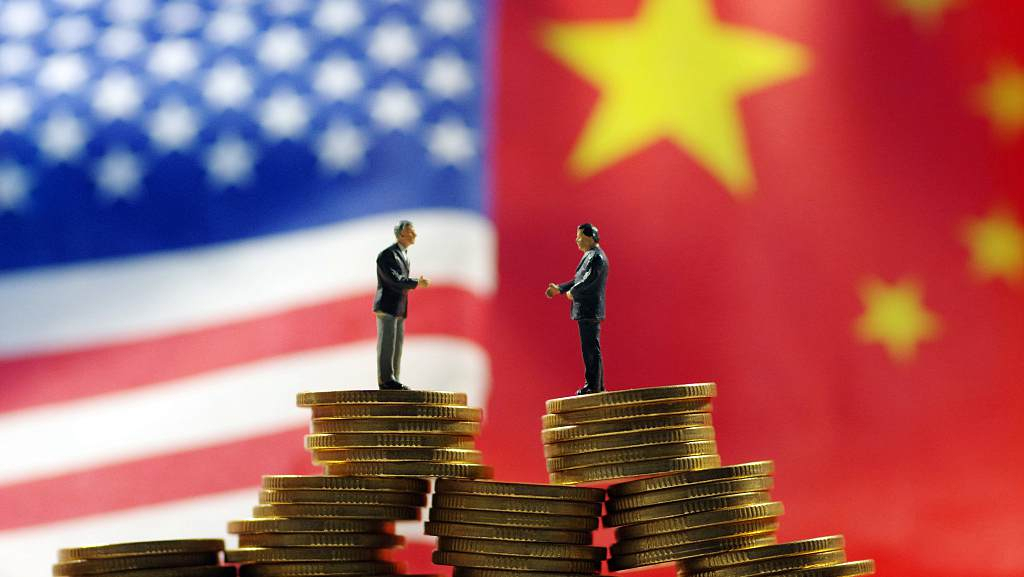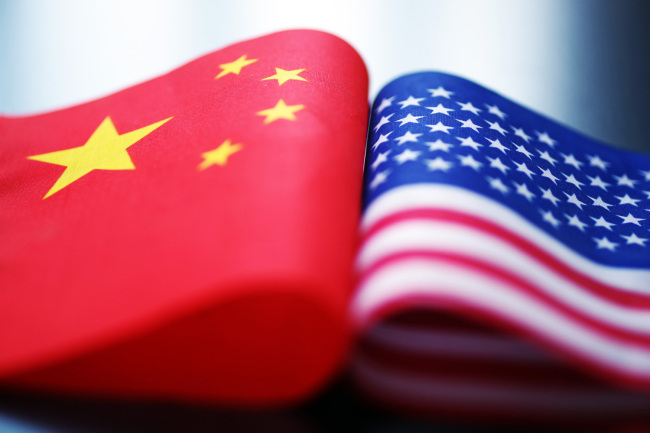

Editor's note: The following article is taken from the Chinese-language "Commentaries on International Affairs," which was first published on June 28, 2019. The article reflects the author's opinion, and not necessarily the views of CGTN.
The heads of state of China and the United States are scheduled to meet on Friday in Osaka on the sidelines of the G20 summit. Ahead of their meeting, the U.S. authorities have once again threatened to impose additional tariffs on Chinese products if the two sides cannot reach an agreement on trade issues. Such a move by the U.S. is no way to solve trade disputes.
China has consistently believed in resolving the trade issues through dialogue on the basis of equality while addressing the reasonable concerns of each party. China has conducted 11 rounds of high-level consultations with the U.S. side since last year. China came to the trade talks pledging its utmost efforts and with the highest sincerity. The two sides did make a lot of progress. However, the U.S. side made three U-turns on their promises and continued to escalate the trade tensions through tariffs, which caused grave setbacks to the trade negotiations.
While advocating dialogue on an equal footing in solving the trade issues, China also believes that there are principles to be observed in any cooperation and there is a bottom line that cannot be crossed. Since May, the U.S. has increased tariffs on 200 billion dollars' worth of Chinese products and put new restrictions on Chinese enterprises doing business in America. China responded by imposing additional tariffs on U.S. products and announcing the plan to establish a list of unreliable entities. China's government also said that it wouldn't tolerate foreign high-tech products made from rare earth produced in China being used to contain and suppress the country's development. These resolute measures have clearly demonstrated China's will and determination to safeguard its national core interests. The U.S. side should not make any misjudgment on this respect.

[File Photo: IC]
China and the U.S. are now highly intertwined with each other in their common interests. The two economies are also highly complementary to each other. Both sides stand to lose in continuing the trade war. There can be no winner. But they have a lot to gain if they choose to cooperate. There's plenty of evidence to show that it is the U.S. importers who will pay for the higher tariffs, rather than Chinese exporters. The Wall Street Journal has reported that the U.S. imports 82 percent of its mobile phones from China, 94 percent of its laptop computers, 85 percent of its tricycles and scooters as well as 98 percent of its games consoles. And that is why at the recent public hearing in Washington DC, 303 out of the 314 representatives from various industrial sectors in the U.S. voiced their opposition to the Trump administration's proposed additional tariffs of up to 25 percent on some 300 billion U.S. dollars' worth of Chinese imports. Stephen Roach, a senior fellow at Yale University, recently put his finger on it, by saying that the U.S. government has a "basic misunderstanding of how tariffs work."
Earlier this month, the Japanese government published a white paper on trade, which sounded alarm bells over trade protectionism and pointed out that excessive trade restriction measures will hinder global economic growth. It has called on countries to show restraint. In fact, this also echoes the call and concern of most other G20 members as they gather in Osaka for the summit at this critical time. It should not be forgotten that the Smoot-Hawley Tariff Act, formally known as the United States Tariff Act, which raised U.S. import duties, caused the amount of international trade to decline by over 60 percent worldwide in the 1930s. It turned an economic slow-down into a massive recession. Today U.S. tariffs are again causing pain for many G20 economies. As such, it is only right that G20 members should choose to support multilateralism and oppose unilateralism, support openness and inclusiveness and oppose protectionism.
There is only one way for China and the United States to reach an agreement and that is through a dialogue of equals. China will never succumb to the threats of additional tariffs.
(If you want to contribute and have specific expertise, please contact us at opinions@cgtn.com)

Copyright © 2018 CGTN. Beijing ICP prepared NO.16065310-3
Copyright © 2018 CGTN. Beijing ICP prepared NO.16065310-3